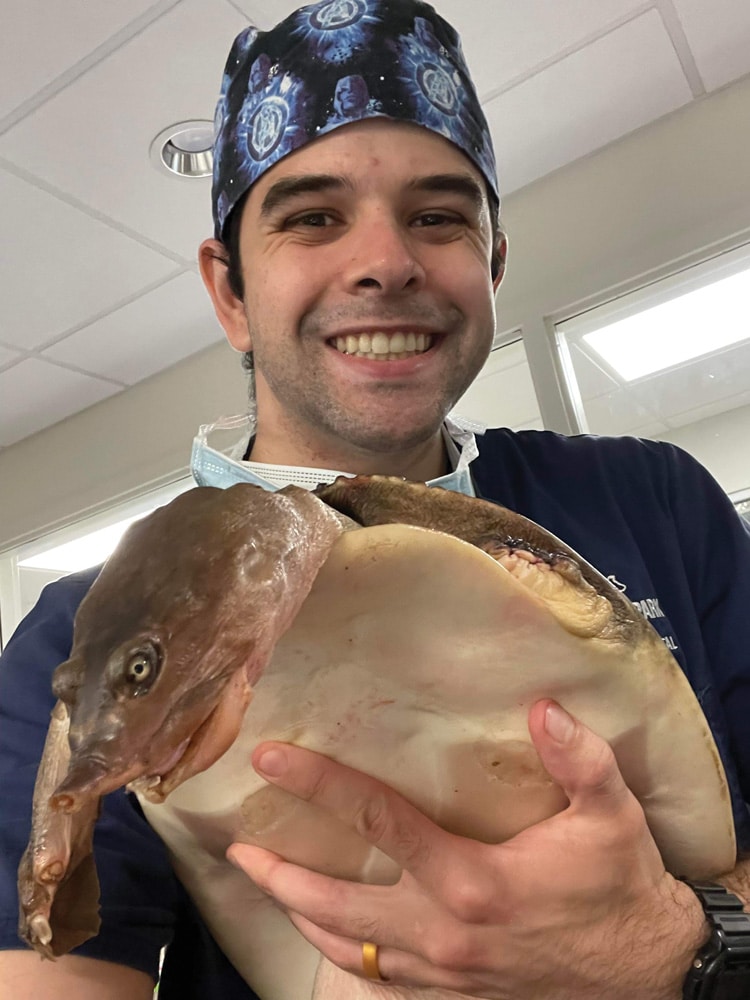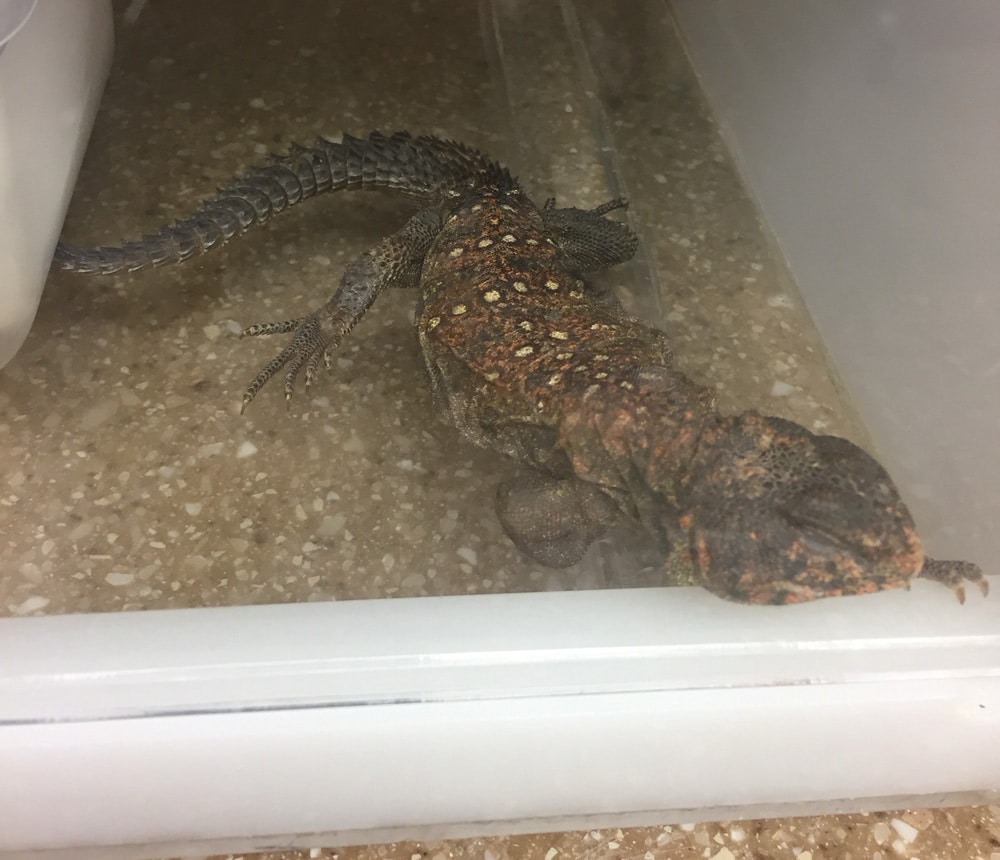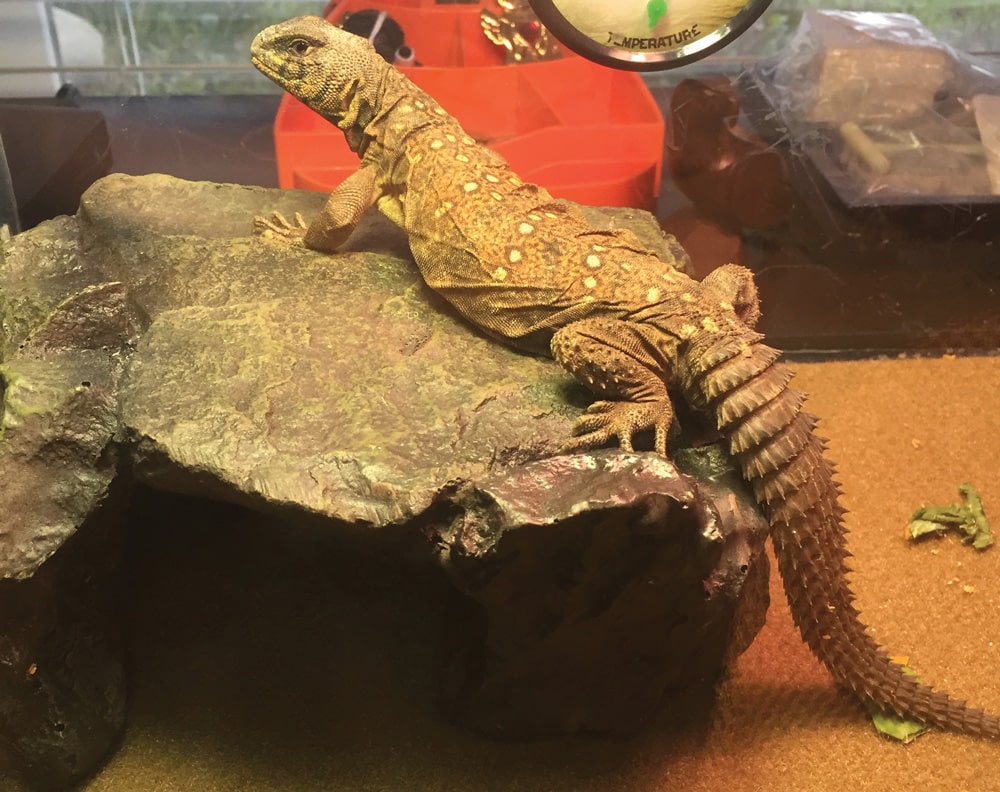"Lizard brain”. No term makes my skin crawl more than this. It perpetuates a cultural view that reptiles are cold blooded brutes that lack emotion. Th
“Lizard brain”. No term makes my skin crawl more than this. It perpetuates a cultural view that reptiles are cold blooded brutes that lack emotion. This is far from the truth. While they lack the facial musculature mammals have that allow us to express emotions, reptiles are able to communicate through the various methods of body language and color manipulation. This extends beyond to whether reptiles express emotion, but also whether they experience pain.
Cold Blooded, Not Cold Hearted
With their stoic natures, reptiles often are left out of groups of animals that are expressive. When we look at reptiles as a whole from a mammalian perspective, it is understandable how this idea came about. When we start to step outside this mindset, reptiles have their own methods of communicating between one another.
One aspect is body language. This can vary across the different taxa. Lizards have a variety of mechanisms to express themselves. Many agamid lizards utilize facial structures such as beards and frills to warn intruders. Iguanid lizards and Anoles use dewlaps to show dominance between other males. Head bobbing and the waving of hands can also be used to assert dominance. Curling tails can show stress, as they are ready to whip their tails. Monitor lizards will take this a step further and puff up their throats and arch their backs . Like other reptiles, the eyes of monitors can constrict when they’re excited. Inflation is also seen as a stress response in other groups of lizards too. Lizards and snakes licking or sticking their tongues out in the environment are curious and exploring their environments following scent trails. Even without limbs, snakes can also express themselves in other ways besides their tongues. Snakes with an S-shaped curve of their neck feel threatened. Erratic movements can mean that they are stressed. For chelonians, pulling into the shell is perhaps the most well-known way of communication in reptiles–they are hiding from something stressful.

This soft-shell has been medicated to reduce pain. Photo courtesy Dr. Eric Los Kamp
Another aspect is color. Reptile eyes are able to see in ultraviolet wavelengths, so the way they see the world is very different from ours–this is why sometimes you’ll hear when reptiles first go out for natural sunlight they can revert to more wild behaviors. Color can be used to ward off intruders. The reptiles most often seen to use color are the chameleons. Males will flash brilliant colors to intimidate other males, and when they are retreating will dull significantly. Other lizards will have brilliantly colored bellies to show to females they’re suitable candidates for mating. Lizards such as blue-tongued skinks and snakes such as cottonmouths use their mouth to threaten other skinks and predators, respectively. Other reptiles use colors to trick other animals, seen with milksnakes mimicking certain species of coral snakes. Additionally, color can be an indicator of health. Reptiles not feeling well or having trouble maintaining body temperature can be diffusely darker. “Black beard” is an unofficial term for bearded dragons that have darkened beards when they feel stressed or sick. If their color is too light, they could be anemic or otherwise deprived of nutrients, good UV rays, or stuck under multiple layers of shed.
Ultimately, reptiles can show recognition of their owners. This can be seen through different taxa, from monitor lizards to elapids and large constrictors to chelonians. From my personal experience with ackie monitors, it took time to develop the bonds. Interacting with them was not like picking up a rock/toy- something thoughtless. I needed to earn their trust. They even started to wait at the front of the enclosures to climb out onto me. And my ackies interacted with different people in different ways. My previous ackie Tyranitar was very comfortable around me, but did not warm up to new people, often taking a week or more to adjust to them. My relationships with my ackies are honestly more comparable to that with my human friends than with a pet reptile. While the extent of this dynamic relationship may vary depending on the species, the human-reptile bond can be just as strong as that with humans and dogs.
Do Reptiles Feel Pain?
When we talk about emotions, a question that also comes up is whether reptiles can feel pain. The questions arise as there is a lack of information studying the reptilian nervous system looking for the specific nerve fibers and receptors for pain. With the limited studies that are present, in tandem with how these fibers and receptors are conserved over a variety of species, it is reasonable to assume that they indeed feel pain. Their stoic natures also likely mask a good majority of this pain from us. We need to assume if it is a condition that would be painful for us or a mammal, it is likely painful for the reptile, despite of how it is acting. At work, for instance, we often receive turtles hit by cars that have massive fractures in their shells and will be walking around normally.

This uromastyx is in pain. Photo by Dr. Eric Los Kamp.
What are signs of pain in your reptile? A lot of them are behavioral. Reptiles in pain may have difficulty moving (snakes that are uncomfortable in a certain body segment will move this area differently compared to others), bite or retreat when a certain body part is touched, or stop moving entirely. They may stop eating, passing bowel movements, or spend prolonged periods of time in a hiding spot or under the basking spot. Reptiles may assume a hunched appearance and have closed eyes (if they have eyelids).
More Articles From Dr. Eric Los Kamp
Reptile Medications
Gut Loading Feeder Insects And Why It’s Important
Reptile Cloacal Prolapse
The Importance Of Veterinarians In Reptile Keeping
If your reptile is in pain, it requires medical attention by a veterinarian and requires pain medication. Commonly prescribed medications used in reptiles are opioids such as tramadol, NSAIDs such as meloxicam, and local anesthetics such as lidocaine when appropriate. Please follow the directions of your prescribing veterinarian for these medications.
Eric Los Kamp, DVM, is an exotic animal and wildlife veterinarian at Winter Park Veterinary Hospital in Winter Park, Florida who has aspirations to board certify in reptile/amphibian medicine. In addition to being a member of the Association of Reptile and Amphibian Veterinarians (ARAV), he is an avid Ackie monitor keeper.



